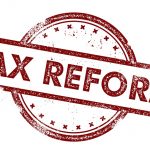
Worried that U.S. tariffs imposed on imports from China and other countries will impact your bottom line? We consulted with Angi’s chief economist, Mischa Fisher, to see whether the situation will be as far-reaching as it seems. The good news is, Fisher believes there are three good reasons the effects on home services may be overestimated:
- The 10% to 25% tariff rate will be shared across manufacturers, importers, retailers, professionals and consumers, lessening the burden on any one party.
- Some products will bypass tariffs by shipping through third-party countries.
- Consumers may shift to competitive products with higher costs but accordingly higher value.
What to expect in the short term:
In the immediate future, homeowners will likely have to pay somewhat higher prices for home services and goods.
“In the short run, this may partially dampen spending,” says Fisher. “But in the long run, the impact should be negligible — unless trade uncertainty creates enough friction in the global economy that it leads to a recession.”
Home services businesses can largely expect to pay somewhere between 5% and 10% more for materials affected by the tariffs, since the cost will be absorbed across several levels of distribution, explains Fisher. But those impacts are also relatively minor. “Tariffs serve as a tax on the consumers of the importing country — and while economically speaking this makes things more expensive than they otherwise might be — it’s not as bad as trade quotas, which limit the volume of how much can be imported with the potential for unpredictably high price increases.”
Of course, we can expect the categories with the highest cost of exposure to tariffs to take the most obvious hits. For example, the installation of a new appliance will include the higher cost of the underlying product relative to the install cost.
What to expect over the long term:
Things become more difficult to predict in the medium-to-longer term, both because the political climate could change and because tariffs themselves can lead to unexpected outcomes when nations begin to adjust.
“Production could shift out of tariff countries, where it can take place for less than the cost of the initial tariff, and prices will drop to that lower level,” Fisher says. “However, production could also shift to even higher-cost places because manufacturers prefer high prices with certainty over lower prices with more uncertainty. This latter case would result in permanently higher prices to consumers.”
The “new normal” to come after this is hard to predict, but Fisher compares today’s tariffs with those imposed during the oil shortages of the 1970s, when prices spiked but eventually came back into the realm of reason. And, he reminds us that contractors and homeowners alike can take heart that even seismic change can lead to a brighter future.
“The biggest upside is that consumers may lean to higher-priced products,” explains Fisher. “After all, if they’re offered at a price equal to the lower-quality goods after the tariff is factored in, it would be foolish not to get the better product — and a better product may even incentive consumers to hire higher-quality pros to ensure a perfect installation.”
Stay Up to Date on Trends
Get the latest marketing & business tips in your inbox.










